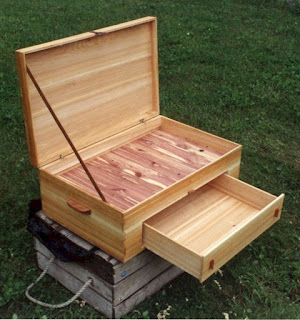Wednesday, February 5, 2025
Free Small Woodworking Projects for Space-Saving Creations
Free Small Woodworking Projects for Space-Saving Creations
In contemporary living, maximizing space is paramount. Clutter can significantly impact the feeling of openness and tranquility in a home. Woodworking offers a unique avenue to address this challenge, allowing for the creation of aesthetically pleasing and functional space-saving solutions. This article explores several free, small woodworking projects designed to enhance your living space without sacrificing style or practicality. These projects are ideal for beginners and seasoned woodworkers alike, requiring only basic tools and readily available materials.
Wall-Mounted Floating Shelves
Floating shelves are a timeless solution for adding storage without the bulkiness of traditional shelving units. Their sleek design integrates seamlessly into any room, offering a versatile platform for displaying books, decorative items, or everyday essentials. This project involves minimal cutting and assembly, making it accessible even to novice woodworkers.
Materials Required:
- Two pieces of wood (e.g., pine, maple) of desired length and thickness. Consider using reclaimed wood for a rustic aesthetic.
- Wood screws (matching the wood type).
- Wood glue.
- Sandpaper (various grits).
- Wood stain or paint (optional).
- Measuring tape and pencil.
- Drill with drill bits.
- Level.
- Wall anchors (depending on wall type).
Construction Steps:
- Measure and cut: Accurately measure the desired length and cut the wood pieces to size. Ensure clean cuts for a professional finish.
- Sanding: Smooth the edges and surfaces of the wood using sandpaper, starting with coarser grits and progressing to finer ones for a silky touch. Pay attention to any imperfections.
- Finishing (Optional): Apply wood stain or paint for a personalized touch. Allow ample drying time before proceeding.
- Hidden Brackets: Install hidden shelf brackets on the back of the shelf. These brackets should be securely attached, supporting the weight of the intended items.
- Wall Installation: Carefully locate the studs in your wall to provide optimal support. Use a level to ensure the shelf is installed perfectly horizontal. Securely attach the brackets to the wall using appropriate wall anchors.
- Final Check: Test the shelf's stability to guarantee it can safely hold your items.
Compact Magazine Rack
A free-standing magazine rack can often occupy unnecessary floor space. A wall-mounted version elegantly solves this problem, keeping your reading materials organized and readily accessible while conserving valuable floor space.
Materials Required:
- Thin plywood or reclaimed wood for the main body.
- Small wooden dowels or strips for dividers (optional).
- Wood screws.
- Wood glue.
- Sandpaper.
- Wood stain or paint (optional).
- Measuring tape and pencil.
- Drill with drill bits.
- Wall anchors and screws.
Construction Steps:
- Design and Cut: Design your magazine rack, considering the number of magazines you wish to store. Cut the plywood or reclaimed wood according to your design.
- Assembly: Assemble the pieces using wood glue and screws. Ensure a secure and sturdy structure.
- Dividers (Optional): If using dividers, carefully install them to create separate compartments for magazines.
- Sanding and Finishing: Sand the entire rack smooth and apply wood stain or paint for a polished look.
- Wall Mounting: Attach sturdy mounting hardware to the back of the rack and secure it to the wall using appropriate wall anchors and screws.
Under-the-Bed Storage Boxes
The space under the bed is often underutilized. Custom-built storage boxes are a simple solution to maximizing this often-neglected area, keeping items organized and out of sight.
Materials Required:
- Plywood or sturdy cardboard (for strength and durability).
- Wood screws or heavy-duty staples.
- Wood glue (if using plywood).
- Sandpaper (if using plywood).
- Fabric or decorative paper (for lining – optional).
- Measuring tape and pencil.
Construction Steps:
- Measure the Space: Carefully measure the space under your bed to determine the dimensions of the storage boxes.
- Cut the Material: Cut the plywood or cardboard to the required dimensions. For plywood, ensure clean, precise cuts. If using cardboard, reinforce corners with additional layers.
- Assemble the Boxes: Assemble the boxes using screws, staples, and wood glue (if applicable). Ensure sturdy construction to support the weight of stored items.
- Sanding and Finishing (Plywood only): Sand any rough edges and apply a protective finish if using plywood.
- Lining (Optional): Line the inside of the boxes with fabric or decorative paper for an aesthetic upgrade and to protect stored items.
Small Wooden Organizer for Desk or Countertop
A compact wooden organizer can significantly declutter a workspace, providing designated spaces for pens, pencils, and other small items. This project is relatively straightforward, perfect for beginners, and offers considerable customization options.
Materials Required:
- Small pieces of wood (e.g., scrap wood).
- Wood glue.
- Small wood screws or nails.
- Sandpaper.
- Wood stain or paint (optional).
- Measuring tape and pencil.
Construction Steps:
- Design and Cut: Design the organizer, considering compartments for various items. Cut the wood pieces accordingly.
- Assembly: Assemble the compartments using wood glue and screws or nails. Ensure a strong and stable structure.
- Sanding and Finishing: Sand down any rough edges and apply wood stain or paint for a polished finish. Allow sufficient drying time.
These are just a few examples of the numerous space-saving woodworking projects that can be undertaken at minimal cost. Remember that creativity and ingenuity are key. By repurposing scrap wood and employing simple techniques, you can transform your living space and create functional and aesthetically pleasing additions to your home. Remember always to prioritize safety and use appropriate protective gear when working with woodworking tools.


0 comments:
Post a Comment